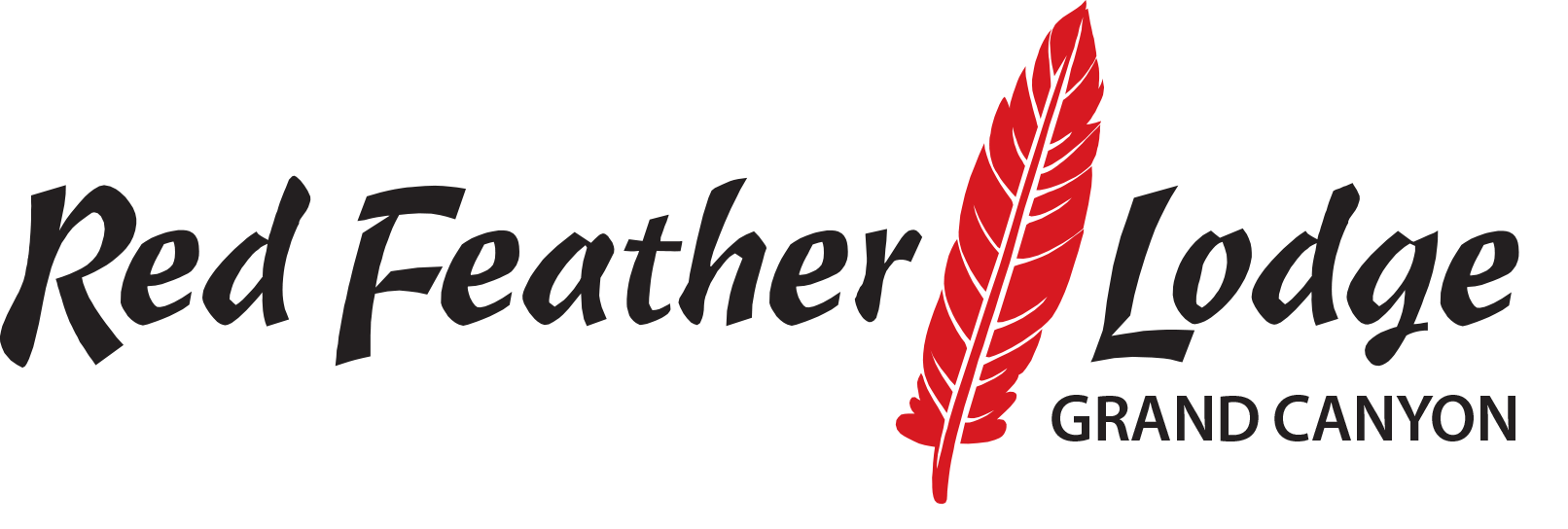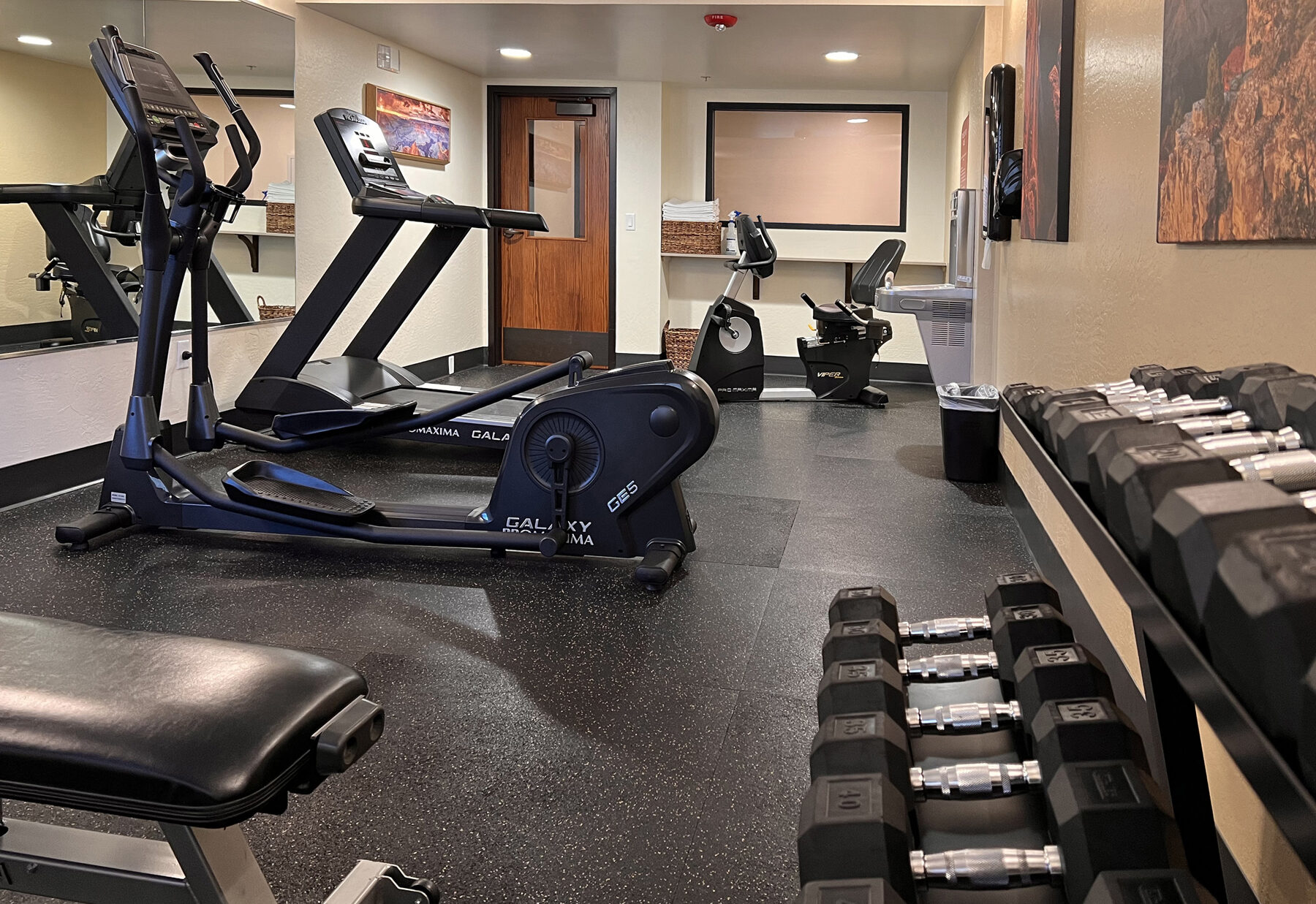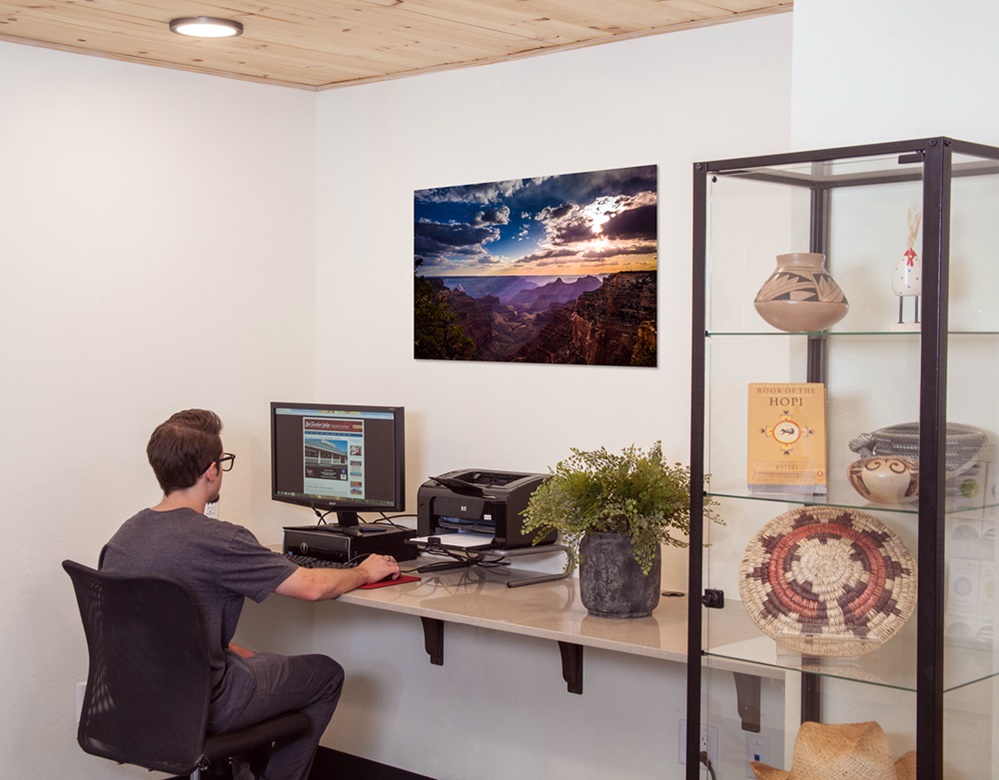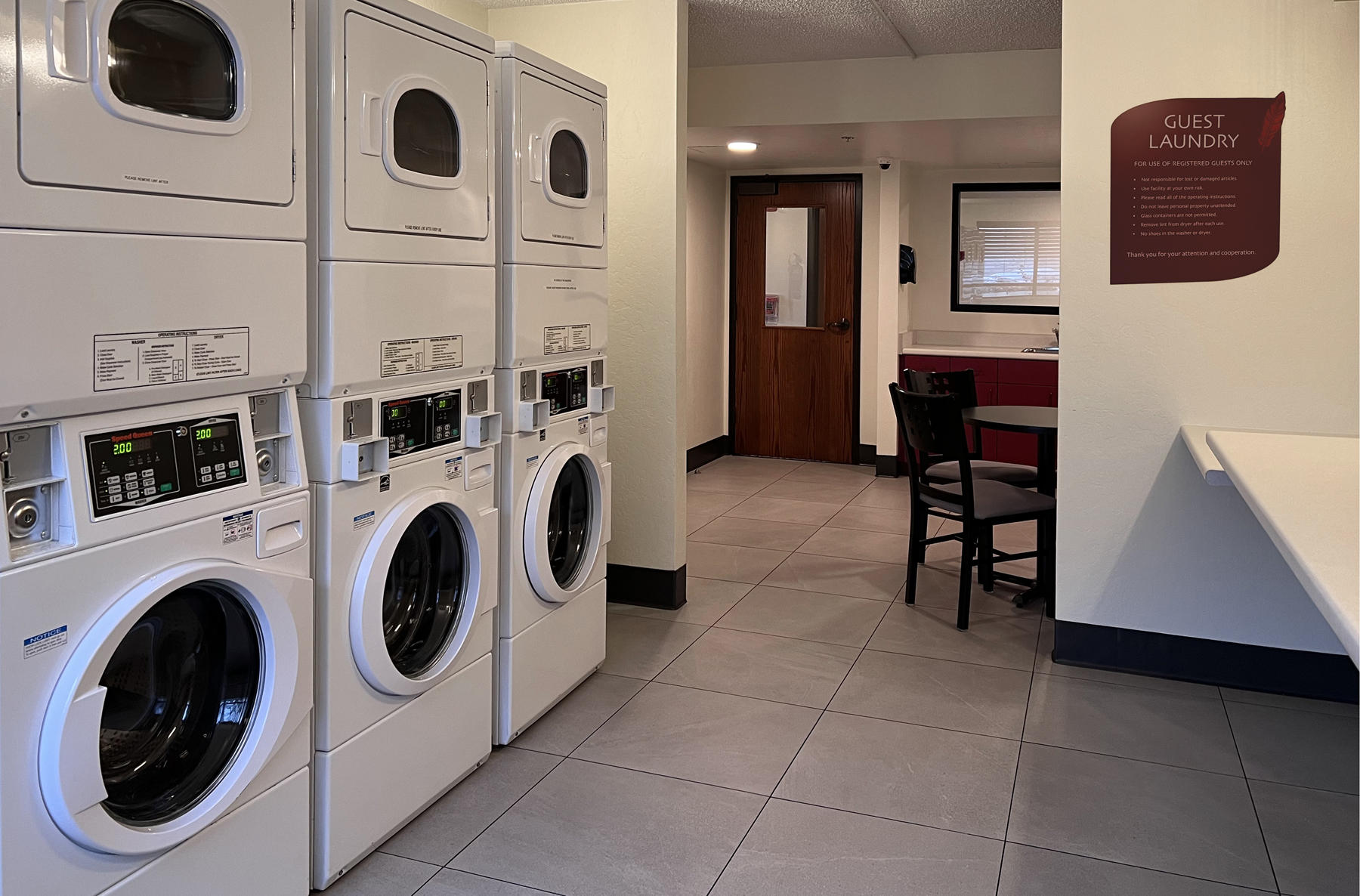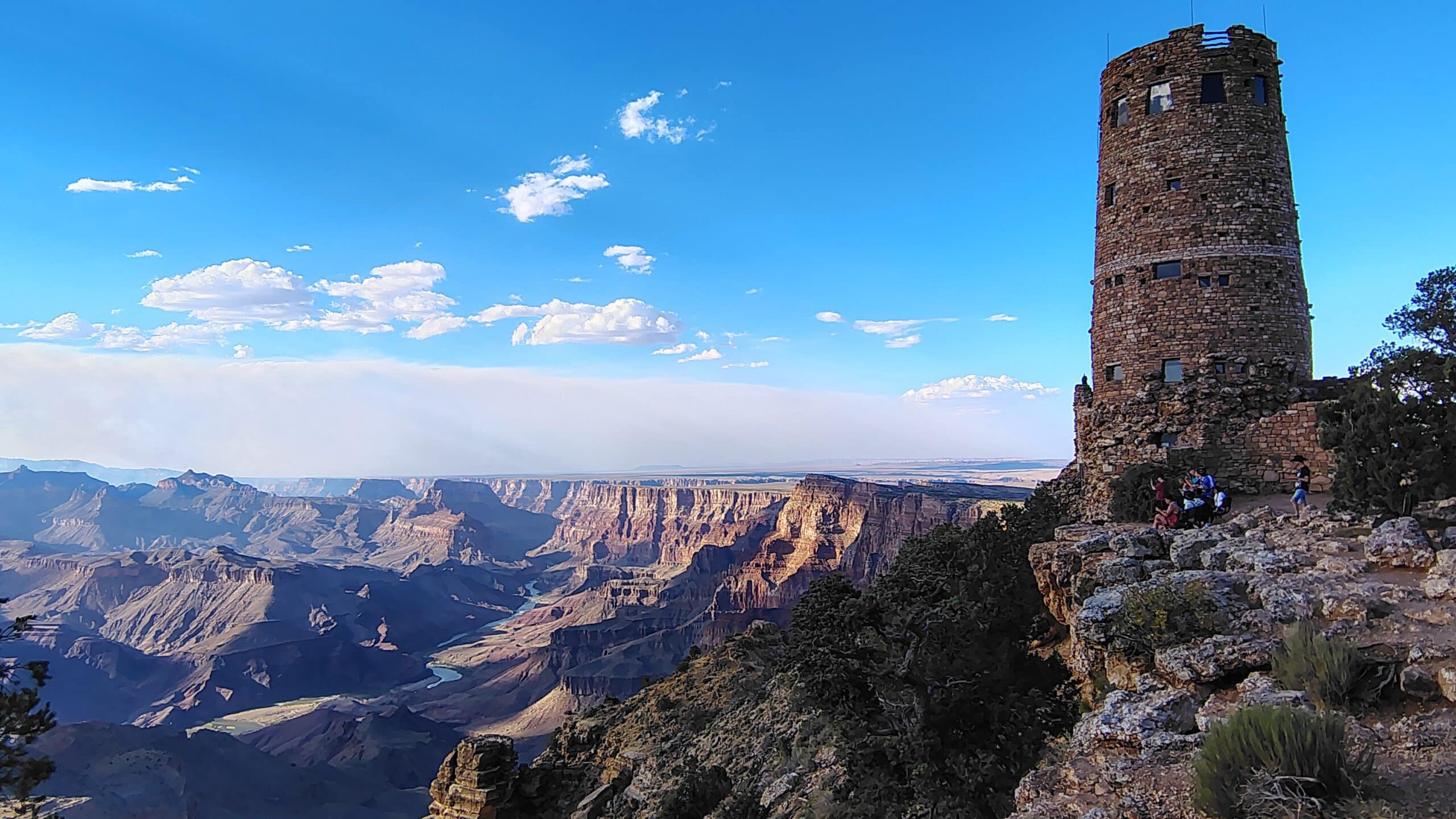
The 6 Most Instagrammable Spots at the Grand Canyon
The Grand Canyon rewards patient photographers. Light changes by the minute. Viewpoints shift with every step. Nearby wildlife, historic buildings and native culture add variety to a rim-heavy album. This guide focuses on six proven, photogenic spots in and around the South Rim, with clear directions on when to go, how to frame, and how to shoot responsibly. Base yourself near the South Entrance for easy sunrise and sunset returns, then build one or two longer day trips for below the rim hiking. Red Feather Lodge sits about a mile from the National Park south gate in Tusayan, with 24-hour lobby coffee and tea, guest laundry (coin operated), a fitness room, and a seasonal heated pool and spa that make early starts and dusty returns simple. Red Feather Lodge Grand Canyon+1
How to shoot the Grand Canyon responsibly
Rules first, because they protect lives and landscapes.
- No drones in the park. The National Park Service prohibits drones at Grand Canyon and all national parks. That includes takeoff and landing. National Park Service+1
- Stay behind railings and watch your footing. The park’s safety guidance is clear: “Stay on designated trails and walkways and always keep a safe distance of at least six feet from the edge.” Photograph from secure footing. Do not climb over barriers. National Park Service
- Wildlife distance matters. Use a zoom. If you are close enough for a selfie, you are too close. National Park Service advises staying about 100 feet from larger animals. National Park Service+1
Good habits pay off. Your photos look better when you slow down, pick safe vantages, and let the light work for you.
The six most Instagrammable spots
1) Mather Point (South Rim)
Why it works: For many visitors this is the first reveal of the canyon. It sits a short walk from the Grand Canyon Visitor Center and parking lots 1–4, with wide views that stretch dozens of miles on clear days. You can see slivers of the Colorado River, Phantom Ranch, and trails crisscrossing below. National Park Service
Best light: Sunrise for warm rim glow and soft shadows. Sunset for layers and silhouettes.
How to frame: Keep your horizon level and use a near-rim foreground to lead the eye into the scene. Step back from the railing and shoot over people’s heads for a clean line.
Logistics tip: Sleep near the South Entrance to beat morning traffic and roll in before the lots fill. Red Feather Lodge is about a mile from the gate, which shortens that pre-dawn drive. [Internal: Hotel] [Internal: Amenities & Features] Red Feather Lodge Grand Canyon+1
2) Hopi Point (South Rim, Hermit Road)
Why it works: Hopi Point is one of the South Rim’s classic sunrise and sunset overlooks, with five distinct Colorado River views. It sits on Hermit Road, which most of the year is reached by the free Red Route shuttle or a walk along the Rim Trail. National Park Service+1
Best light: Sunset for long cross-light and saturated color. Sunrise for calm platforms and open shadows. The shuttle stop sits just west of the overlook. Follow the short paved path to the broader vista. National Park Service
How to frame: Anchor the river in the lower third. If you have a longer lens, compress mesas for a stacked look.
Logistics tip: In winter, Hermit Road opens to private vehicles under 22 feet, which helps if you prefer to drive instead of riding shuttles. National Park Service
3) Ooh Aah Point (South Kaibab Trail)
Why it works: A short, dramatic below-the-rim hike with big payoff. From the South Kaibab Trailhead, it is about 1.8 miles roundtrip with roughly 790 feet of elevation change. It’s perfect for a more adventurous, trail-based photo. There is no water on this trail. Access the trailhead by the free Kaibab (Orange) shuttle. National Park Service+1
Best light: Early morning for cooler temps and gentler contrast. Winter often delivers clear air and ice-free sections where the sun hits the trail. National Park Service
How to frame: Use the ridgeline to guide the viewer. Step to the side of the social-media cluster and give yourself room. Keep both feet on solid tread. The trail returns uphill, so pace the climb.
Safety note: Do not attempt rim-to-river-and-back as a day hike. Turn around at your planned point. National Park Service
4) Desert View Watchtower (South Rim, Desert View Drive)
Why it works: Architecture plus panorama. The 1932 tower by Mary Colter borrows forms from ancestral Puebloan towers and frames one of the park’s widest vistas. It is now recognized as a National Historic Landmark. Bring a wide lens for the interior murals and the outside steps. National Park Service+1
Best light: Mid-morning to catch interior detail. Late-day for long shadows on the tower’s stonework.
How to frame: Shoot low and close to emphasize the tower’s height. Then pivot to the overlook for a two-photo set: one architectural, one landscape.
Logistics tip: Desert View anchors the park’s east side. It pairs well with sunrise at Mather or sunset at Hopi if you plan a full driving loop.
5) The Abyss (South Rim, Hermit Road)
Why it works: The name says it all. This viewpoint offers a dizzying, sheer drop-off of over 3,000 feet (914 m) to the canyon floor. The perspective from here is dramatic and provides a unique opportunity to capture the depth and verticality of the canyon. National Park Service
Best light: While The Abyss is often cited as a great sunset spot, sunrise is also an excellent time. As the sun rises in the east, the light will hit the distant canyon walls, creating a warm, golden glow and long shadows that add depth and drama to your photos. The low angle of the morning sun helps to define the intricate layers and formations of the canyon. Additionally, there are typically far fewer people at sunrise, giving you more space and a more peaceful experience.
How to frame: Mind the drop. Stay behind railings or at least 6 feet from the rim. The image is strongest when you include sky, birds or people for scale.
Logistics tip: Hermit’s Rest anchors the park’s west side. Sunrise at The Abyss and mid-morning photos at Hermits Rest. Make sure to see the grand fireplace at Hermits Rest.
6) Moran Point (South Rim, Desert View Drive)
Why it works: Named after the painter Thomas Moran, this viewpoint showcases the different rock layers and colors of the canyon. The shadows and changing light throughout the day showcase vibrant layers of rock that include black Cardenas Basalt, purple layers of Bass Formation, a slope of orange Hakatai Shale and brown cliffs of Shinumo Sandstone. The Colorado river is often visible from Moran Point as it winds through the canyon. National Park Service
Best light: Sunrise and Sunset (Golden and Blue Hours) are both beautiful times of day to take photos. The rising and setting sun illuminate the canyon walls, bringing out deep reds, oranges and purples.
How to frame: While the vastness of the canyon is the main subject, a strong foreground is essential to give your photo depth and a sense of scale. Look for trees, flowering shrubs or interesting rock formations near the rim to place in the foreground. Focus in on the distinct rock layers. A telephoto lens can be used to isolate individual rock formations.
Logistics tip: Moran Point is generally less crowded than other viewpoints like Mather Point. Arriving early will help you secure a good spot for your tripod. Desert View anchors the park’s east side. It pairs well with a trip to Desert View Watchtower.
Itineraries that keep the light on your side
One day on the rim with a photo focus
Sunrise at Mather Point. Breakfast and a warm-up walk on the Rim Trail. Midday break in Tusayan for a nap, swim, laundry, or a second coffee. Sunset at Hopi Point. Stay near the gate to shorten every transfer and increase your odds of catching low light twice. [Internal: Amenities & Features] [Internal: Location] Red Feather Lodge Grand Canyon+1
Two days
Day 1: Sunrise at Mather Point. Take the Kaibab (Orange) shuttle at the Visitor Center near Mather Point to Yaki Point. Hike the Kaibab Trail to Ooh Aah Point. Make lodging arrangements in Tusayan for a mid-day nap, then head back into the Park for Sunset at Moran Point. Day 2: At the National Park Visitor Center near Mather Point, hop on the Hermit’s Road red route shuttle and see Hopi Point, the Abyss and Hermits Rest along the way. At Hermits Rest see the massive stone fireplace. National Park Service+1Navajo Nation Parks & Recreation
Family-friendly sampler
Ride shuttles to Hermit Road overlooks and choose two stops with restrooms or shade. If you want to add one below-rim shot, pick Ooh Aah Point and turn around on time. Finish with dinner in Tusayan and a quick look at your photos while batteries charge. National Park Service
Quick gear and settings
- Phones: Clean the lens. Use HDR. Tap to focus on mid-distance rock, then pull exposure down a notch to protect highlights.
- Cameras: A 24–70 handles most rim scenes. A longer lens compresses layers at sunset. Polarizers help manage glare but can band the sky at very wide angles.
- Tripods: Helpful at blue hour. Keep legs inside railings and away from walkways.
- Human scale: Include a hiker or railing in one frame to show canyon size. Ask permission before photographing people.
Safety, access, and etiquette in one place
Rules get you better photos and keep the experience open for everyone after you.
- Drones: Prohibited at Grand Canyon and other national parks. National Park Service
- Railings and edges: Stay behind barriers. Keep at least six feet from the edge where there is no railing. National Park Service
- Wildlife: Zoom rather than approach. If you can selfie with an animal, you are too close. National Park Service
Expert guidance from NPS Grand Canyon: “Stay on designated trails and walkways and always keep a safe distance of at least six feet from the edge.” National Park Service
Where to stay near the South Entrance
You get more blue hour when your room sits near the gate. Red Feather Lodge is in Tusayan, approximately one mile from the South Entrance. Rooms include a refrigerator, microwave (hotel only), and coffee maker, which helps with early departures. On property you have free registered-guest parking, 24-hour lobby coffee and tea, a business center, a fitness room, guest laundry (coin operated), and a seasonal heated pool and spa. Link these pages inside your CMS so readers move naturally from inspiration to planning: Hotel, Motel, Amenities & Features, Location, and FAQs. Red Feather Lodge Grand Canyon+3Red Feather Lodge Grand Canyon+3Red Feather Lodge Grand Canyon+3
Why visual planning matters right now
Grand Canyon hosted about 4.9 million visitors in 2024. Expect popular overlooks to stay busy at peak times. The solution is not to rush. Sleep close to the gate, work around crowds, and design a plan that puts you on the rim when the light is good and the platforms feel calm. National Park Service+1
END OF BLOG
Image pack for this article (5 ideas)
- Mather Point sunrise
Low winter sun lighting the upper walls, subtle pink in the sky, two visitors on the walkway behind the railing sipping coffee in reusable mugs. - Hopi Point golden hour
Wide shot with the river visible, long shadows on buttes, a tripod set back from the edge. - Ooh Aah Point from the trail
A hiker on stable tread two steps back from the drop, canyon layers stacked behind, an obvious trail line showing a safe stance. - Desert View Watchtower
Exterior three-quarter view with warm stone lit by late sun, then a second tight frame of the interior mural with soft even light. - Moran Point for layers of color
Safe vantage behind the railing or rim edge capturing foreground trees, rocks or flowering shrubs.
